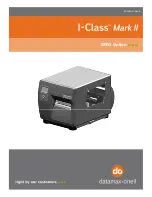
5
1.0 PRODUCT APPLICATION
1.1 PURPOSE:
Confined space systems are products designed for use in work areas with limited room or maneuverability.
System applications vary with the product. For more information on system applications, refer to the “Product Overview”
and Table 1.
1.2 SUPERVISION:
Use of this equipment must be supervised by a Competent Person. Installation must be supervised by a
Qualified Person.
1.3 STANDARDS:
Your product conforms to the national or regional standards identified on the front cover of these
instructions. If this product is resold outside the original country of destination, the re-seller must provide these
instructions in the language of the country in which the product will be used.
;
For more information on certification or conformance requirements, refer to the applicable standards and
regulations listed for your product (e.g. the ANSI/ASSP Z359 Fall Protection codes).
1.4 TRAINING:
This equipment must be installed and used by persons trained in its correct application. These instructions are to be used
as part of an employee training program as required by national, regional, or local standards. It is the responsibility of the users and
installers of this equipment to ensure they are familiar with these instructions, trained in the correct care and use of this equipment,
and are aware of the operating characteristics, application limitations, and consequences of improper use of this equipment.
1.5 RESCUE PLAN:
When using this equipment and connecting subsystems, the employer must have a written rescue plan and
the means to implement and communicate that plan to users, authorized persons, and rescuers. A trained, on-site rescue team
is recommended. Team members should be provided with the equipment and techniques necessary to perform a successful
rescue. Training should be provided on a periodic basis to ensure rescuer proficiency. Rescuers should be provided with these
instructions. There should be visual contact or means of communication with the person being rescued at all times during the
rescue process.
2.0 SYSTEM REQUIREMENTS
2.1 ANCHORAGE:
The anchorage structure securing this product must be able to withstand any required loads as permitted by its
Fall Protection system. See Section 4 for more information.
2.2 CAPACITY:
The user capacity of a complete Fall Protection system is limited by its lowest rated maximum capacity component.
For example, if your connecting subsystem has a capacity that is less than your harness, you must comply with the capacity
requirements of your connecting subsystem. See the manufacturer instructions for each component of your system for capacity
requirements.
2.3 ENVIRONMENTAL HAZARDS:
Use of this equipment in areas with environmental hazards may require additional
precautions to prevent injury to the user or damage to the equipment. Hazards may include, but are not limited to: high
heat, chemicals, corrosive environments, high voltage power lines, explosive or toxic gases, moving machinery, sharp
edges, or overhead materials that may fall and contact the user or equipment. Contact 3M Technical Services for further
clarification.
2.4 LIFELINE HAZARDS:
Ensure the lifeline is kept free from all hazards including, but not limited to: entanglement with
users, other workers, moving machinery, other surrounding objects, or impact from overhead objects that could fall onto
the lifeline or users.
2.5 COMPONENT COMPATIBILITY:
3M equipment is designed for use with 3M equipment. Use with non-3M equipment
must be approved by a Competent Person. Substitutions made with non-approved equipment may jeopardize equipment
compatibility and may affect the safety and reliability of your Fall Protection system. Read and follow all instructions and
warnings for all equipment prior to use.
2.6 CONNECTOR COMPATIBILITY:
Connectors are compatible with connecting elements when the size and shape of either
component does not cause the connector to inadvertently open, regardless of orientation. Connectors must comply with
applicable standards. Connectors must be fully closed and locked during use.
3M Connectors (snap hooks and carabiners) are designed to be used only as specified in each instruction manual. Ensure
connectors are compatible with the system components to which they are connected. Do not use equipment that is non-
compatible. Use of non-compatible components may cause the connector to unintentionally disengage (see Figure 3). If
the connecting element to which a connector attaches is undersized or irregular in shape, a situation could occur where
the connecting element applies a force to the gate of the connector (A). This force could then cause the gate to open (B),
disengaging the connector from the connecting element (C).






































